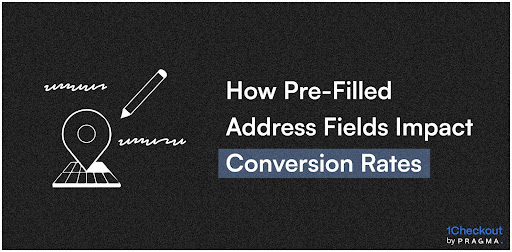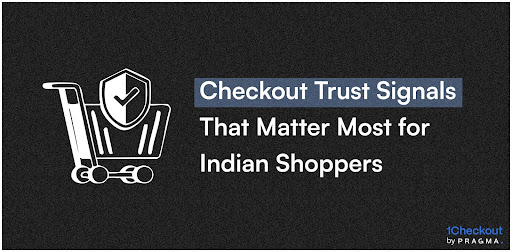The Importance of a Secure Payment Page

With the rise in digitisation and internet access even in the rural areas, ecommerce is growing at an exponential speed in India.
The number of digital transactions in India increased from 1.06 billion in December 2019 to 2.66 billion in December 2020, according to data from the RBI.
And according to a report by the Association of Certified Fraud Examiners, e-commerce fraud accounts for 34% of all reported fraud cases. While the total amount of e-commerce fraud losses was estimated to be $4.2 billion (2020), according to a report by Statista.
With the increased growth in Payment modes, providers etc., comes an increased opportunity for scammers to commit ecommerce payment fraud.
As more transactions are carried out online, an additional layer of security to protect customer data entered during these transactions becomes an inevitable need.
Therein arises The Importance of a Secure Payment Page!
A Secure Payment Page is essential for any ecommerce website that wants to protect its customers' sensitive payment information and ensure that their online transactions are safe and secure.
In this blog post, we will discuss why ecommerce businesses need to invest in secure payment pages and the benefits they provide.
What is a Secure Payment Page?
"Secure Payment Page" is a term used in ecommerce to describe a webpage where customers can enter their payment information to complete a purchase. The term typically refers to a page that is secured using encryption and other security measures to protect customer data.
For example, our 1Checkout provides a 256-bit Defence-Grade Security and Encryption
How do brands benefit from this Security?
Protect customer data: A secure payment page ensures that customers' payment information, such as credit card details, are protected from hackers and fraudsters who may try to intercept and steal the data. By using encryption, secure payment pages protect sensitive data from being read or intercepted by unauthorised third parties.
Building customer trust: A secure payment page can help build customer trust in an ecommerce website. Customers are more likely to make a purchase if they feel confident that their payment information is being handled securely. Displaying security badges or trust seals on the payment page can also help to reassure customers that the website is trustworthy.
Meet industry standards: Ecommerce websites that accept payments must comply with industry standards such as the Payment Card Industry Data Security Standard (PCI DSS). A secure payment page helps ensure that the website meets these standards and is not at risk of incurring fines or other penalties for non-compliance.
Prevent fraud: A secure payment page can help prevent fraudulent transactions by verifying the identity of the customer and detecting fraudulent payment information. Some payment gateways use advanced fraud detection and prevention measures to flag suspicious transactions and prevent fraudsters from making unauthorised purchases.
This is the basic gist of it, but..
People trust numbers, so, here are some facts to traverse the importance of a Secure Payment Page:
- A report by NortonLifeLock found that 84% of Indian consumers are concerned about their online security and privacy.
- According to a survey by Baymard Institute, 17% of online shoppers abandon their shopping cart due to concerns about payment security.
- A report by Forrester states that the use of secure payment pages can reduce cart abandonment rates by up to 5%.
- In 2020, 80% of new online shoppers in India were from Tier 2 and Tier 3 cities, according to a report by Google and Boston Consulting Group.
- A survey by ACI Worldwide found that 32% of Indian consumers have experienced fraud while making online payments.
- The Reserve Bank of India (RBI) mandates that all online transactions must be secured using at least SSL/TLS encryption.
- According to a survey by FIS, 65% of Indian consumers prefer to use digital payment methods, such as debit or credit cards, e-wallets, or net banking, when making online purchases.
- The Indian government's push towards a cashless economy has led to a surge in digital payments, with the value of digital payments in the country expected to reach $135.2 billion by 2023, according to a report by KPMG.
Security across Payment Modes
In India, the percentage of payments made across payment modes in e-commerce has been changing rapidly over the last few years due to the emergence of new payment methods and the government's push towards digital payments.
Unified Payments Interface (UPI): UPI is a real-time payment system developed by the National Payments Corporation of India (NPCI). It has gained significant popularity in India due to its ease of use and convenience. As of September 2021, UPI accounts for more than 80% of digital payments in India.
Debit and Credit Cards: Debit and credit cards are still a popular payment mode in India, with a usage percentage of around 10-15%.
Digital Wallets: Digital wallets such as Paytm, PhonePe, and Google Pay are widely used in India, and have a usage percentage of around 5-10%.
Net Banking: Net banking, where users make payments directly from their bank accounts, is still a popular payment mode in India, with a usage percentage of around 5-10%.
Cash on Delivery: Cash on delivery (COD) is still a popular payment mode in India, especially for low-value purchases. However, its usage has declined over the years and currently accounts for around 5-10% of payments.
Immediate Payment Service (IMPS): IMPS is a real-time interbank electronic fund transfer service offered by NPCI. It has a usage percentage of around 1-2%.
Bharat Interface for Money (BHIM): BHIM is a mobile payment app developed by NPCI that allows users to make payments using UPI. It has a usage percentage of around 1-2%.
Mobile Wallets: Mobile wallets other than UPI-enabled wallets, such as Mobikwik and Oxigen, have a usage percentage of around 1-2%.
Pay-On-Delivery: Pay-On-Delivery (POD) is a payment mode where users can pay for their purchases at the time of delivery. It has a usage percentage of around 1-2%.
EMI: EMI, where users can pay for their purchases in instalments, has a usage percentage of around 1-2%.
With a Secure Payment Page, a brand enables safe transactions across all the above and more.
How can a Merchant ensure Payment Security?

Here’s a simple checklist that we follow with our 1Checkout, and also urge brands to opt for a Secure Payment Page which offers the below:
- SSL/TLS encryption: All data entered on the payment page, including credit card information and personal details, should be encrypted using SSL (Secure Sockets Layer) or TLS (Transport Layer Security) encryption protocols. This ensures that the data is protected from interception or tampering during transmission.
- PCI DSS compliance: Ecommerce websites in India must comply with the Payment Card Industry Data Security Standard (PCI DSS), which sets out strict security requirements for storing, processing, and transmitting cardholder data. This includes requirements for maintaining secure network infrastructure, implementing access controls, and regularly monitoring and testing security systems.
- Two-factor authentication: Two-factor authentication (2FA) is an additional security measure that requires customers to enter a one-time code or use biometric authentication to verify their identity before completing a transaction. This can help prevent fraudulent transactions and protect customer data from unauthorised access.
- Fraud detection and prevention: Ecommerce businesses should implement fraud detection and prevention measures, such as real-time monitoring of transactions and automated risk assessments, to identify and prevent fraudulent transactions.
Note: Our 1Checkout coupled with our RTO and NDR data from 450+ brands give us an upper hand when it comes to fraud detection. - Secure hosting and infrastructure: The payment page should be hosted on a secure server with robust security features, such as firewalls, intrusion detection and prevention systems, and regular vulnerability scans and updates.
- Compliance with local laws and regulations: Ecommerce websites must comply with local laws and regulations governing online payments, including data protection and privacy laws, consumer protection laws, and financial regulations in India.
- Tokenization: Tokenization is a security technique used to replace sensitive card data with a non-sensitive token, which can be stored and transmitted safely without compromising the original data. This can help reduce the risk of data breaches and protect customer data.
- Payment gateway security: Payment gateways are third-party services that facilitate online transactions and ensure the secure transfer of payment data. Ecommerce businesses should select a payment gateway that is reliable, secure, and compliant with industry standards.
Note: Apart from Payment Gateway Security, 1Checkout also offers up to 50% refunds on Payment Gateway Charges - Regular security assessments and testing: Ecommerce websites should conduct regular security assessments and testing, including vulnerability scans and penetration testing, to identify and address any security weaknesses or vulnerabilities.
- User awareness and education: Ecommerce businesses should provide user awareness and education programs to help customers understand the risks of online payments and how to protect their personal and financial information.
Overall, a secure payment page for your ecommerce store should provide a safe and secure environment for online consumers to enter their payment information and complete transactions, while protecting their data from fraud and unauthorised access.
Risks Involved with Payments That Are Not Secure
It's risky for both your company and your customers if your website accepts payments using a payment page that doesn't adhere to all current security standards.
Fraudulent transactions: Unsecured payment pages can make it easier for fraudsters to intercept and steal sensitive payment information, such as credit card details and personal information, which can be used to make unauthorised transactions.
Data breaches: Unsecured payment pages can be vulnerable to cyber attacks, which can result in the theft or exposure of sensitive customer information. This can damage the reputation of the business and result in financial losses due to legal and regulatory fines.
Customer mistrust: If a customer's payment information is compromised due to an unsecured payment page, it can erode trust in the business and discourage customers from making future purchases.
Legal and regulatory non-compliance: Ecommerce businesses that do not implement adequate security measures for online payments may be in violation of local and international laws and regulations, which can result in legal and financial penalties.
Financial losses: Unsecured payment pages can result in financial losses for both the customer and the business, including chargebacks, refunds, and lost revenue due to customer mistrust.
The risks of unsecured payments in e-commerce are evident, and they can have long-lasting impacts on the business and its customers.
Therefore, it is crucial for ecommerce businesses to implement robust security measures to protect against these risks and ensure the safety and security of their customers' payment information.
Third Party Checkout Systems and D2C Brands
The recommended way for a D2C website to create a secure payment page is to use a third-party payment processor to encrypt and store customer financial information.
In order to add a third-party payment processor to a website, D2C brands must first create an account with the processor and then integrate it into their website using the provided tools and APIs. Once this is done, customers will be able to use the payment processor to pay for their purchases securely.
With 3rd Party Providers, the major advantage for D2C brands would be:
Simplified checkout process: Third-party checkout solutions can provide a streamlined and user-friendly checkout process with the help of optimisation made with the data from all the brands they handle.
For example: 1Checkout optimises with the help of data from 450+ Brands, which can help reduce cart abandonment rates and increase conversions.
Security: Third-party checkout solutions often provide high-level security measures to protect sensitive customer data, including encryption, fraud detection and prevention, and PCI compliance.
For example: 1Checkout provides 256-bit Defence-Grade Security and Encryption
Flexibility: Third-party checkout solutions typically offer a range of payment options and integrations with various ecommerce platforms and payment gateways, which can provide greater flexibility for ecommerce businesses.
For example: 1Checkout offer up to 50% refunds on Payment Gateway Charges
Faster implementation: Third-party checkout solutions can be implemented quickly and easily, without requiring extensive development or technical expertise, which can save time and resources for ecommerce businesses.
For Example: 1Checkout can be integrated in 5 days
Reduced administrative burden: Third-party checkout solutions handle the administrative tasks associated with payment processing, such as managing customer data, processing refunds and chargebacks, and reconciling transactions, which can free up time and resources for ecommerce businesses.
For example: 1Checkout offers a backup checkout system in play if our servers are overloaded or unresponsive for a period of time - Meaning, your online consumers will never see a “Unable to Checkout” sign on their screen.
To know more about how me improve customer checkout experience
→ Solving the Checkout Problem
To conclude..
Ecommerce businesses should invest in a Secure Payment Page in order to provide peace of mind to their customers when it comes to securing their financial information during checkout.






